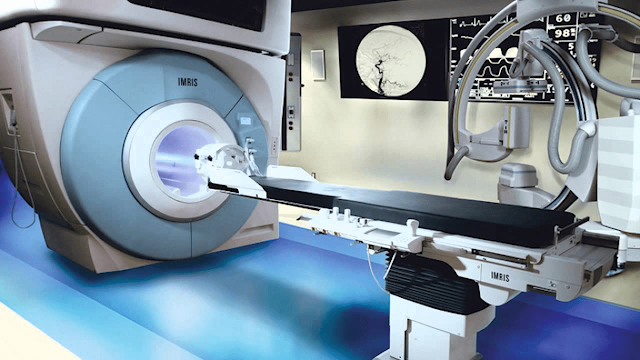Intraoperative Imaging Technologies Are Rapidly Advancing With Continuous Technological Development To Support The Neurosurgical Tasks
 |
| Intraoperative Imaging |
Intraoperative Imaging is a powerful tool for neurosurgical
guidance and can help minimize surgical risk and postoperative complications.
However, implementing intraoperative imaging requires specialized training and
expertise. A number of factors have to be considered, including patient risk
and safety, cost, operator training, and additional time required for the
procedure itself.
Various imaging technologies are being developed to support
the neurosurgical task. This includes real-time magnetic resonance imaging
(MRI), intraoperative ultrasound, optical surface matching techniques, and
other surgical navigation methods. Each of these has its own advantages and
disadvantages, which should be taken into consideration when deciding on the
most suitable approach to a specific surgical case.
Incorporating Intraoperative
Imaging into
neurosurgery provides information about the location of the surgical site, the
size and position of vessels and nerves, and the anatomy of the tumor. It also
enables the surgeon to visualize tissue in the context of the brain and other
parts of the body, as well as to monitor tissue change over time.
Intraoperative Imaging can provide updated images of the
surgical site in real time, thereby avoiding brain shift and providing an accurate
picture of the surgery’s progress. This helps to identify areas of tissue
necrosis and resection, which can be useful for guiding neurosurgical
techniques.
MRI can be used to perform stereotactic procedures, such as
tumor resection and vascular craniotomy, which require a high level of
precision in order to achieve optimal results. Due to this, MRI is becoming a
more popular choice for these surgeries.
As a result, MRI is a rapidly expanding field in
neuroscience. This is particularly true for oncology. The number of new cancer
cases and deaths is increasing, which increases the need for a variety of
advanced diagnostics and imaging techniques. A growing number of MRIs are being
utilized in oncology, with the goal of improving the outcome of surgical tumor
resections. These improvements include better image quality, faster scanning
times, and more detailed information about the tumor and its surrounding
tissues. In April 2021, the U.S. Food and Drug Administration (FDA), granted
510(k) clearance to Active Surgical for ActivSight Intraoperative Imaging
Module for enhanced surgical visualization.



Comments
Post a Comment